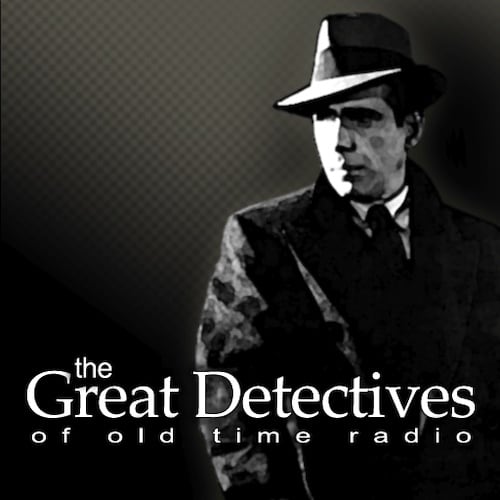With the end of Season Ten of The Red Panda Adventures, The Red Panda and the Flying Squirrel retired and are thought dead by the general public. Toronto has a new protector, so what exactly is left for Season Eleven? Six lost stories occurred between the Adventures of the Red Panda that we heard on audio.
Each episode has a framing device that sets up a look back at a never-before-told story. It’s a fun format that doesn’t carry the weight of trying to fit into the ongoing arcs of the previous seasons. The adventures are fun and imaginative and most tended toward the pre-war era for the Terrific Twosome of Toronto which had a nostalgic effect. My favorite episode was Twas the Night Before in which the young son of the Red Panda and the Flying Squirrel tells a story of the Red Panda and how he encountered Santa Claus. It’s easily the best Christmas episode Decoder Ring Theater ever produced and fun.
If I had one complaint, it was that a few framing stories seemed to be related and that they were all going to tie together with our heroes taking some (out of costume?) action but alas they weren’t going anywhere. Still, I’m not certain how much of that’s Taylor’s fault and how much it’s mine for having the expectation.
Overall, this is a nice little encore for the Red Panda and Flying Squirrel whose past adventures continue to be explored in comics and audiobooks.
Rating for the Series: 4.25 out of 5
Overall Thoughts on the Series:
The Red Panda Adventures was a cleverly structured series. The series has ongoing plot arcs throughout its run. Gregg Taylor was clever in the show’s early run with the way each series would seemingly be episodic but would also be setting up future events, such as the Red Pandas encounter with the Nazis before World War II, hints of magic influences that would culminate in the Occult War, and the mysterious disappearance of former Red Panda operative during the latter part of the War, which would be a big concern for the Flying Squirrel during Season Nine and paid off in Season Ten.
As a pastiche to mystery men and shows like the Green Lantern and the Shadow, it’s unparalleled. In one way, Taylor improved on these old radio programs and pulps. In the original stories from the golden age, these characters never aged, but did change to meet the needs and demands of wartime. Taylor gave his characters life. They changed and evolved. The Red Panda had an era of dominance and an apex of power that waned, giving way to the age of costumed and caped superheroes that succeeded him. It’s a good solid character journey through an exciting era.
Taylor’s stories used pulp-style stories of monsters, crime, and horror, but also was clearly influenced by later works as well, as Marvel and DC stories, along with Science Fiction franchises clearly were an influence that Taylor managed to translate back to his golden age setting.
The acting was good. Often over the top, but that’s what the series called for and it did a good job delivering it. The series had a recurring ensemble cast that made it possible to bring Taylor’s vision of the Toronto of the 1930s and 1940s to life.
The show’s biggest consistent problem was its weak sound effects. These weren’t “cheesy like the old days.” In the old days on radio, they had sound effects men who could have produced much higher quality effects when the Shadow was on the air then were included in The Red Panda. The best thing that could be done to improve the series is remastering it with better effects. The series mostly avoids moments that call for big effects, but I can’t recall a single time a big effect landed.
Some ideas developed during the series weren’t fully explored. Taylor introduced characters featured only once, such as a new butler whose memory wasn’t wiped and the Flying Squirrel’s mother moving in to take care of the baby or different new superheroes or villains. The limits of the series left a lot of interesting ground unexplored.
The series also could try a bit too hard with modern-thinking characters existing in the 1930s and 1940s. But it never took itself too seriously, which makes such efforts clumsy but inoffensive.
Overall, The Red Panda Adventures is not only a pioneering series in the new world of original podcast audio dramas, but it also manages to capture the spirit of programs like The Shadow and the old pulp magazines and find new ways to make them fun for a modern audience. It overcomes its weak sound effects through well-plotted and interesting series and continues its legacy in books, audiobooks, and comics.
Rating: 4.5 out of 5

